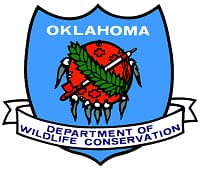Oklahoma’s Paddlefish Annual Harvest Limit Set at Two Per Angler

New angling rules are pending that will help conserve Oklahoma’s important populations of paddlefish. The changes include setting an individual annual harvest limit of two fish per angler and requiring that anglers report their paddlefish harvest online using the Oklahoma Department of Wildlife Conservation’s e-check system.
The changes were part of a resolution approved by the Oklahoma Wildlife Conservation Commission at its December meeting. Last month, the Commission approved emergency rules that allow the Commission to set annual paddlefish harvest limits by resolution.
Though the emergency rules are in effect, they must pass through a public comment period and be signed into law by the Governor before becoming permanent.
The annual harvest limit has been set at two paddlefish per individual, meaning that once anglers have harvested two fish, they must stop keeping them for the year.
However, they can continue “catch-and-release-only” fishing for paddlefish. Additionally, the new rules require anglers to log on to wildlifedepartment.com to report their harvest, much like hunters must check in their harvested deer online. Checking fish will further expand biologists’ knowledge of paddlefish populations. Current rules that limit anglers to one paddlefish per day and that require them to stop fishing for the day once a fish has been kept will remain in place.
According to Jason Schooley, paddlefish biologist for the Wildlife Department, the rule changes are important for conserving paddlefish in the Grand River system that largely supports the state’s – and some would argue the nation’s – most popular paddlefish fishery.
Paddlefish mature slowly – females must reach 8-10 years of age before they mature and reproduce; males, 6-8 years of age. And even then, paddlefish are “episodic”
reproducers, meaning their populations are marked by good but sporadic years of successful reproduction mixed with less than ideal years. Schooley says protecting the prominent age class – in this case the 1999 age class – will help sustain the fishery while younger age classes mature. While ODWC continues to monitor recruitment, hopefully future year classes will contribute to continued paddlefish angling in Oklahoma.
Known for the unusual appearance of their long, bill-like snout and their large size, paddlefish have been the subject of intense study ever since an important Wildlife Department research facility opened in 2008 near Miami in northeast Oklahoma.
Six years of harvest data and four years of angler surveys indicate that most paddlefish anglers (84 percent) harvest fewer than two fish in a year. The remaining 16 percent of anglers disproportionately represent over 40 percent of the total harvest. Choosing an individual annual harvest limit of two fish was the ideal option to limit the high-harvest anglers (those putting the most strain on the resource) while not restricting most other paddlefish anglers. Also, survey results indicated that paddlefish anglers put more value on the opportunity to catch a fish than they do on the ability to harvest a fish. Therefore, once an individual annual harvest limit is reached, catch-and-release is still available year-round.
“What we are doing with these rule changes is protecting our paddlefish by proactively adjusting the harvest before we reach a point of over-harvest,” Schooley said. “At the same time, we are making these changes while we still have some of these 1999 fish around so they can continue to support the fishery. We have enjoyed that year class as a resource, but because they have a definite lifespan, that population is declining naturally. These rules will help us bring in younger age classes while making sure we have plenty of good fishing available in the meantime.”

